The Jab That Keeps on Giving...300% Increase in ALS(Motor Neuron Disease) Drug sales reveals Singapore's Hidden Health Horror Story!
Time to rewatch "Walking Dead"!!
A big part of my job back in Big Pharma (for those who don’t know, I worked in three of the top 5 pharmaceutical companies, plus one in the top 20) was spinning a good story around sales numbers for the bosses. Nail the narrative, and you’re golden for another year. Botch it, and you’re packing your desk. I’ve been knee-deep in drug sales data for close to 20 years, so I know when something smells off—like a trend that’s too steady to suddenly go haywire.
That’s why what I’m about to share has me—and a bunch of my ex-pharma buddies—losing sleep. It’s a slow-burn health crisis that’s slipping right past the mainstream headlines, but it’s real, and it’s building.
I even had to double-check the numbers and run the trend lines myself (I’ll walk you through that in a sec). We’re talking about a spike in sales for Riluzole, the go-to drug for treating ALS, or Motor Neuron Disease (MND) as it’s sometimes called. This isn’t some flashy new med; it’s a 30-year-old staple that’s been as predictable as clockwork for decades.
But before we dive into the data, let me set the stage with a quick detour. (If you’re itching to skip the backstory and jump straight to the numbers, scroll down to the “Riluzole Sales Data” section below.)
Why Singapore? My Secret Sauce for Spotting Trends
If you’re new to my takes, I’ve got a thing for using Singapore as a crystal ball for global health shifts—having worked there for almost a decade, as it serves as a regional hub for the Asia-Pacific for most of the top Big Pharma except Gilead, which is located in Hong Kong.
Singapore’s data is squeaky clean. Picture this: A tiny island nation of just 6 million people, where every citizen is tied into a rock-solid digital ID system called SingPass which is compulsory for all residents. You can’t even open a bank account without it. It’s woven into everything—health records, taxes, you name it. That means when official stats say someone got vaccinated, you can bet your bottom dollar they did. No fudging, no loopholes.
Compare that to places like Australia, where folks could (and I suspect many did) whip up fake vaccine certs online to dodge mandates and hit the gym or grab a coffee. Singapore? Nah. During the pandemic, they rolled out these digital “tags” linked straight to your SingPass—green for vaxxed, red for unvaxxed. Want to shop at the mall, dine out, or clock into an office? Scan that bad boy or stay home. It’s all standardized across all 28 districts within a 50-by-27-kilometer zone.
Check out the clip here:
It was airtight, which is why their vax rates shot up to over 85% with the mRNA shots alone (and the rest on non-mRNA shots). That kind of transparency makes Singapore a perfect early-warning system: If something weird pops up there first, the rest of us better pay attention.
With strict digital compliance measures, Singapore achieved a 92% full vaccination rate—one of the highest globally. It launched the Pfizer rollout on December 20, 2020, just weeks after the US FDA’s emergency approval on December 11. Singapore’s neighbouring country Malaysia’s even claimed that Singapore received the first batch in Asia while they were still negotiating deals[SOURCE]. This early access stemmed partly from the government’s $250 million investment in BioNTech in June 2020, before Phase 3 trials began[SOURCE]. No conflict of interest there! (yeah, right!)
In the world of drug distribution, that timing screams “first dibs” on the initial Pfizer batches—the very ones now getting shredded in labs for packing way too much unwanted baggage: bits of plasmid DNA and that sneaky SV40 promoter/enhancer sequence. If you don’t believe it, watch the CDC’s ACIP Committee Workgroup talking about it here last month.
Here is an approximate breakdown indicating that about 87.8% of the entire population received mRNA vaccines (Pfizer and Moderna).
So what’s the result of hyper-vaccinating almost an entire population with the earliest batch of contaminated gene therapy?
Check out this gut-punch chart from Our World in Data, stacking all-cause deaths against the usual pre-2020 baseline.
Flat as a board through early COVID in 2020—no shots yet. Then wham: As Singapore’s mRNA gene therapy blitz hits late 2020 and blasts to 85%+ coverage by mid-2021, excess deaths (that red line sneaking above zero—extra bodies beyond the norm for hearts, cancers, etc.) start creeping up.
It explodes around Q3 2021, and by Q2 2023, Singapore ranked number one in the world in terms of excess deaths at a staggering 37% above trend. By end of 2023, cummulative excess deaths was 4 times (9000+) more than COVID deaths (2000+). “Safe and Effective”.
And lo and behold, Singapore, proudly clinching the gold in the global excess mortality Olympics—nailing that top-quartile spot among the super-vaxxed digital-leash nations. All thanks to the lightning-fast “Speed of Science” and turbocharged “Speed of Acquisition with Digital ID monitoring.” What a triumph!
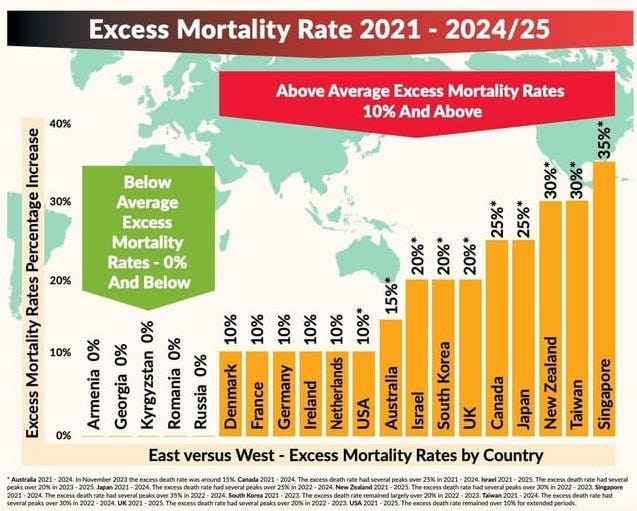
On top of that, let’s not forget Singapore’s real-world numbers, which took an inconvenient turn after the vaccines hit the scene. Before the campaign kicked off, they’d racked up 58,403 COVID cases with a grand total of 29 deaths—translating to a case fatality rate of just 0.05%, barely a blip on the radar. Then came the rollout from December 20, 2020, through December 31, 2022:
After the vaccination campaign started, between December 20, 2020, and December 31, 2022, even though the virus had mutated into a less lethal variant, there were 2,143,811 cases. However, COVID deaths skyrocketed to 1,682 in 2022.
This translates to a CFR of 0.08%.
So to recap, before the experimental vaccinations, it was 0.05%, and after vaccinations, it increased to 0.08%. In other words, COVID deaths rate went up by 60% after the vaccinations, according to Singapore’s own real-world data.
Vaccines were sold as the ultimate shield against severe outcomes, right? Yet with a tamer virus and nearly everyone vaccinated, the body count still climbed at a higher rate. That Worldometers chart spells it out plain as day—no spin needed. What do you think: pure coincidence, or the small print nobody bothered to read?
First off, can you even wrap your head around it? They strong-armed 92% of the population into this experimental gene therapy when COVID’s case fatality rate was a whisper at 0.05% to 0.08%.
A fresh Stanford-led study, dropped in JAMA Health Forum back in July 2025 by Ioannidis and crew, admits the shots “saved” a paltry 2.5 million lives worldwide from 2020 to 2024—mostly the over-60 crowd. That’s a laughable drop from the bonkers 14.4 million figure governments regurgitated, straight out of Watson et al.’s wobbly modeling circus—and get this, the new paper doesn’t even factor in the lives snuffed out by vaccine side effects.
Dig deeper, and it’s a joke: 90% of those “saves” went to folks 60 and up, while a pitiful 0.01% trickled down to the under-20s (that’s 253 kids globally, if you’re counting). Flip the script for perspective—for every one young life supposedly spared, it took a mind-boggling 5 million jabs worldwide. Singapore? They’ve got barely 783,000 peeps under 20, so math says they didn’t “save” a single one. What a win for the kids, huh?
Having shown you the big-picture mess of Singapore’s vax push and its deadly ripple effects, let’s zoom in on one Singaporean guy’s nightmare to make it real.
Thank You, Digital ID!
Ah, nothing says “land of the free” like a shiny Digital ID that turns your every skeptical whisper into a glowing red target. Enter Mr. Cedric Lim, your classic hardworking cabbie in Singapore, dodging potholes and payday loans just to keep the rice bowl full for his faily. No conspiracy nut—this guy’s got a simple beef: Why risk experimental gene therapy roulette when you’ve got bills stacking higher than a bad poker hand? So, he hops on a cozy Telegram channel called “Healing the Divide,” (Link) run by Ms. Iris Koh, a spot where skeptical folks could still air their doubts without Big Brother’s instant ping.
Jab or job? Tough call, but Cedric picks job: He books a slot at Dr. Jipson’s clinic for the non-mRNA Sinovac, figuring that’s his only possible way to get a green pass and grocery money. And he posted this message in the telegram channel right before taking the sinovac jab because he doesn’t trust any vaccination, rightfully so.
Unfortunately for Mr. Cedric Lim, with his name splashed all over Telegram and that rock-solid digital tracking system supposedly flagging him as a “vaccine skeptic” who called them “tyrants”, the government zeroed in on him faster than a hawk spotting a mouse—who he was, and exactly when and where he got his jab, boom, target locked and loaded.
Cops crash his door like it’s a bad action flick—no warrant, no knock, just “We’re searching this!” as they flip his world upside down. Turns out, that foolproof Digital ID and digital trail had lit him up like a Christmas tree—he was “Patient Zero” in their witch hunt for fake jabs. I mean, you gotta stop the anti-vaxxers, right???
In August, during a jaw-dropper of a 2025 government trial against Ms. Iris Koh (the Telegram trailblazer) and Dr. Jipson Quah, Cedric spills the tea: Shell-shocked and cornered, he watches them trash his place while an old-school cop, schooling the rookies like a mob boss, leans in with that oily Singlish growl—”You never see police beat people before or not?” Panic mode: Heart hammering, mind blank, Cedric inks their cooked-up confession, fingering Dr. Jipson as providing fake vaccination passes for saline shots. Real shot or just saltwater show? Who knows—they are still unraveling that knot. All for daring to question the script in a system where one scan seals your fate. Cheers to progress, eh?
I’m telling you straight: When Singapore boasts a 92% vax rate, you can bet your last SingPass it’s the real deal, no fakes slipping the net. That digital dragnet? Snags ‘em all, every last one.
It’s like an episode of Pokemon: Gotta catch ‘em all!
Now for Riluzole Sales Data
First, quick ALS 101 for the uninitiated: Amyotrophic Lateral Sclerosis is the beast that chews through your motor neurons—the brain’s wiring for muscles. Starts sneaky: A twitch here, a stumble there, then bam—your body betrays you, turning simple stuff like walking, talking, or swallowing into a full-on war. No cure, just a grim march to total paralysis and finally death, usually wrapping up in 2-5 years from diagnosis. Riluzole (or in Singapore, they branded it as Rilutek), it’s the lone HSA (Singapore’s FDA) approved fighter, a little pill that tweaks brain chemicals to dial down glutamate overload, basically buying you a few extra months (2-3 extra months on average, up to 6 months if you’re lucky) by shielding those dying neurons from toxic floods. Not a miracle, but in ALS world, it’s the best we’ve got.
Now, the numbers: These are straight from proprietary quarterly distributor sales in Singapore—pure boxes of Rilutek (that’s the brand, a standard 56-tablet pack), not dollar fluff. Why boxes? Price hikes or deals don’t muddy the water; this is raw demand, who-needs-it-now volume. And here’s the kicker making it gold-standard clean: Singapore’s tiny pond (just 6 million souls) means no generics cluttering the shelf. Generic Pharma skips ‘em here—the market’s too puny to bother selling more of the same drug for pennies. One SKU rules: Rilutek 56 tablet box, or bust. No noise, no alternatives. What you see is what patients are grabbing, period.
Before 2020? Total yawn-fest—sales just chilling around 8,000 to 14,000 boxes. COVID crashes the party in 2020? Not even a splash; numbers dip a bit, bounce right back to normal, no hoarding or empty shelves in sight. Then—bam!—Q2 2021 hits, smack in the middle of vaccination big push and booster hype: The climb starts, rockets to 22,000 by Q3, and keeps on trucking like it owns the road. Fast-forward to 2023 through now in 2025? We’re yapping 30,000 to 37,000 boxes—almost three times the old “normal,” a whopping 300%+ smackdown that’s stuck like glue. No extra awareness campaigns with star-studded ads like they did with vaccination campaigns, no sneaky supply games. Just... more sick people lining up, quarter after endless quarter. What a “coincidence,” huh?
Now, let’s break down the ugly math: ALS patients don’t stick around forever after diagnosis—2 to 5 years max, and Riluzole’s big “gift” is a measly few extra months before the lights fade. Mega-sales increasing on year after year like this? It sure ain’t old-timers constantly restocking; its likely they are gone. It’s a wave of brand-new patients snapping up boxes from the get-go. You think it’s because of better diagnosis and awareness? Nah, Singapore’s a tiny country with near-100% medical access. You’re not suddenly uncovering hidden patients in some forgotten backwater—remember the whole island is just a 50-by-27-kilometer zone.
Now, flash back to the CDC’s big “oops” in their September 2025 ACIP meeting: They finally spilled it, where the gene therapy didn’t stay in the arms but instead slipped right past the sacred blood-brain barrier—that trusty wall keeping crap out of your skull—showing up in brains, eyes, hearts, the works.
BREAKING: CDC's ACIP Finally Admits Major mRNA Vaccine Safety Concerns!
In a jaw-dropping session at the Advisory Committee on Immunization Practices (ACIP) meeting on September 19, 2025, two top experts, Dr. Charlotte Kuperwasser and Dr. Wafik El-Deiry, laid bare the serious doubts about mRNA COVID-19 vaccines from Pfizer and Moderna. Their topic, called "
Spike proteins? Lingering for months, toxic enough to spark strokes, fog, or worse. Frameshifting? Up to 10% of shots churning out Frankenstein proteins that could rogue your immune system into attacking your own wiring. Add SV40-tainted DNA hitchhiking in, and whispers of prion-like misfolds (those brain-scrambling proteins) aren’t so tinfoil anymore.
Remember, this is a 30-year-old drug—it’s not some shiny new gadget hyped on TikTok that’s suddenly blowing up sales. Nah, it’s supposed to chug along at a boring, predictable clip.
What about Japan? Another vax-all-in poster child, pumping mRNA vaccines into arms faster than sushi rolls off the line. Bummer: We only get the sales in cold hard yen (not handy box counts like Singapore’s clean sheet), and it cuts off at 2022. But hey, even that’s a red flag! 540% increase between 2021 and 2022.
And finally we have Australia. We’ve got four generic versions of Riluzole gumming up the works, so the numbers are a blurry mess compared to Singapore’s one-and-only clean sheet. Still, the boxes sold? They nudge up nice and slow from 2020 on—not a fireworks launch, just a steady, annoying uphill crawl.
Why the baby steps? Weaker jab pressure back then—no Digital ID net to snag the cheaters, probably loads of folks slipped by with fake vaccine cards (props to you, rebels—high-fives all around!). I reckon way fewer got the 3rd jab in Australia, once they figured out fake cards.
Vax rates capped at about 80%, giving the doubters some breathing room. That big last-quarter hop? These are shipments from distributors to drugstores, and pharmacies stockpile steady (30-60 days’ worth, based on how “must-have” the pill is). I think someone finally noticed the slow inventory leak, hit panic mode, and slammed a fat order to restock the shelves sometime in Q2 2025.
Anyway in summary, ALS is a straight-up death row—2 to 5 years from diagnosis. Riluzole’s your consolation prize: A couple extra months if you’re average, maybe 6 if the stars align.
Face it, we’ve got a full-blown post-jab health hangover brewing. We know that mRNA sneaks past the blood-brain barrier and throws a wrecking party in there. Some eggheads might finger the virus itself. But hold up: Even then, the Cleveland Clinic’s own dive shows the more jabs you stack, the itchier you get for COVID, flipping that excuse on its head. Moot point, folks—game over for the spin.
Enjoy the zombie apocalypse and stay away from highly vaccinated areas.
Signing off for now
A17
PS: Hey guys, do you think my analysis is worthwhile? I have a lot to say, and I do it for free without paywalls so far because I don’t want to be seen as someone selling the truth for money. I want to reach as many people as possible, especially those who cannot afford to “buy” information and are forced to consume mainstream media.
But I depend on your donations if you’d like to see more of this. It takes a lot of my personal resources (I flew down to Singapore, met with ex-Pharma colleagues, etc. I didn’t write for a few weeks because my 13-year-old laptop stopped working). Do consider a donation if you can; otherwise, it’s okay too. But my paid subscriptions are dwindling, and it’s somewhat discouraging.
or Buy Me a Coffee here:
https://buymeacoffee.com/aussie17
I have much more to say... something like Ritalin (for ADHD) and lots of analysis for cancer and autoimmune drugs. For now, you can eyeball the analysis yourself notice when it starts trending upwards.


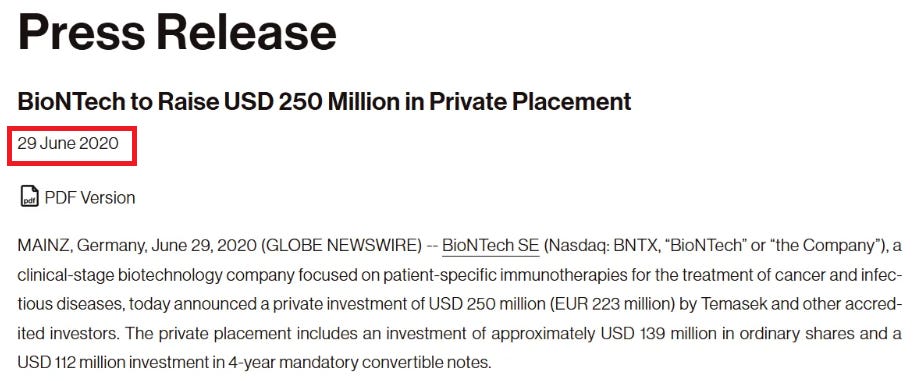
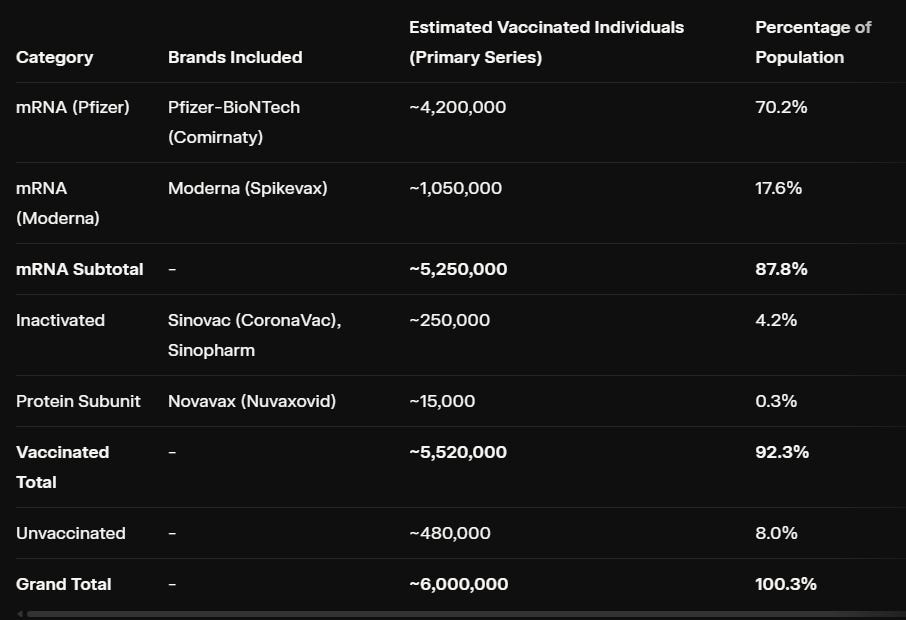
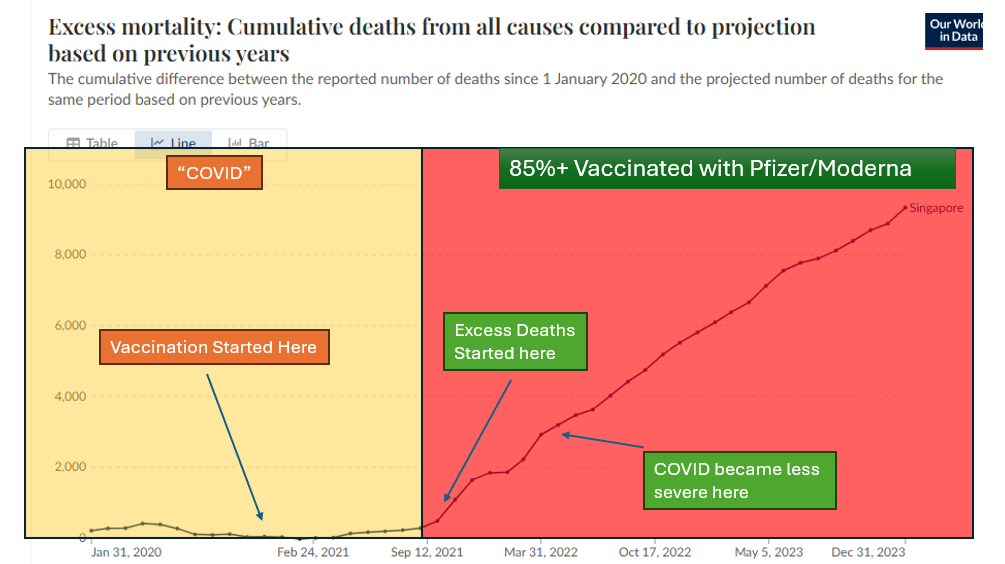
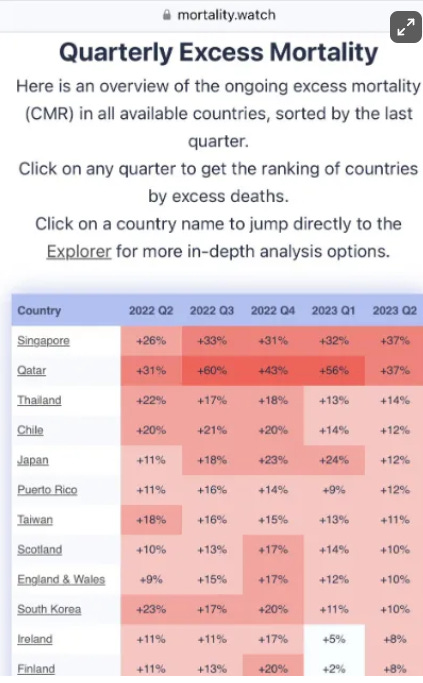
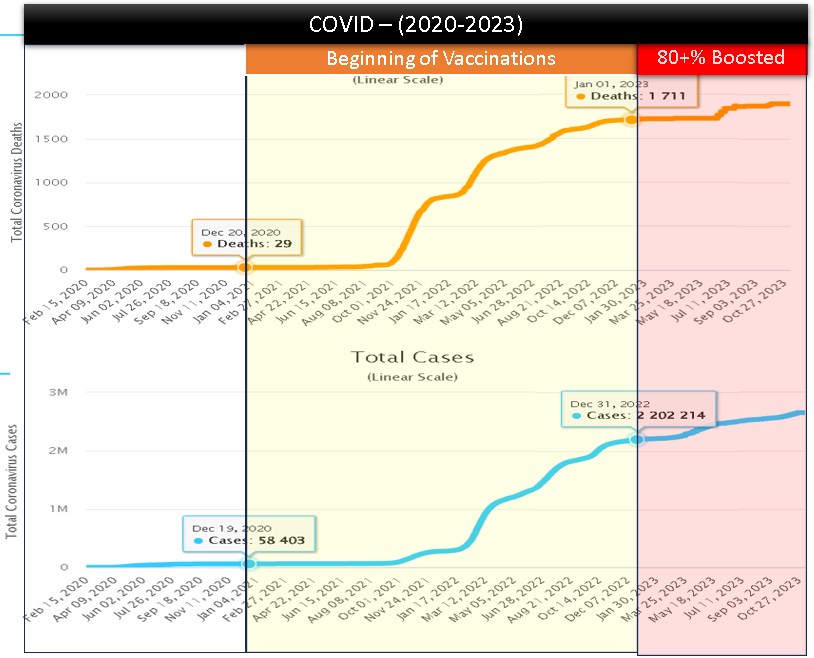
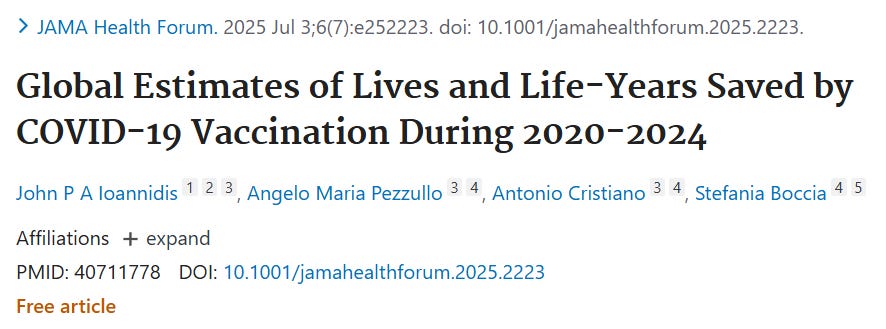
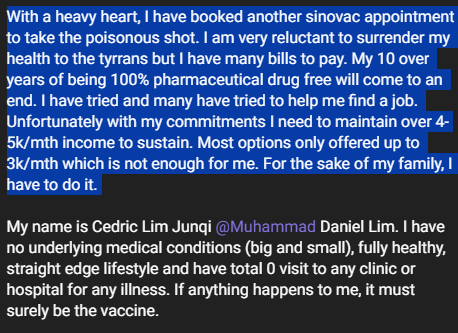

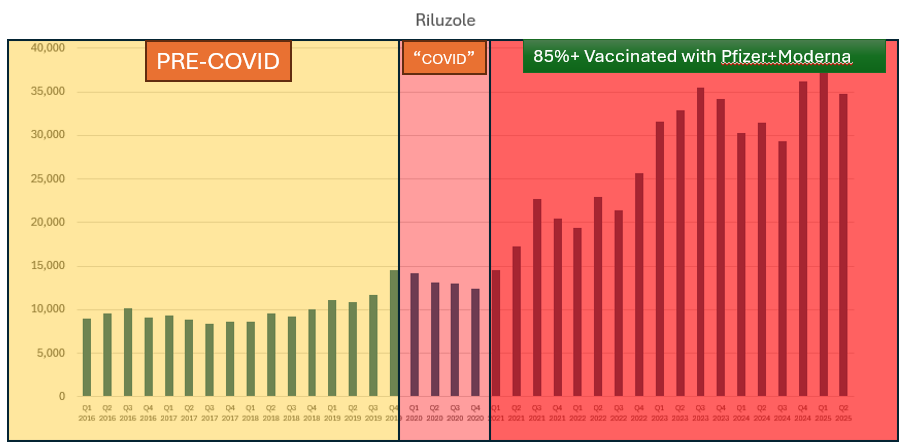
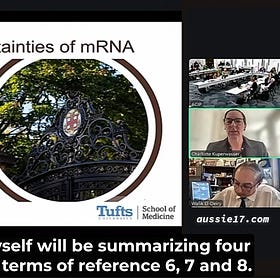
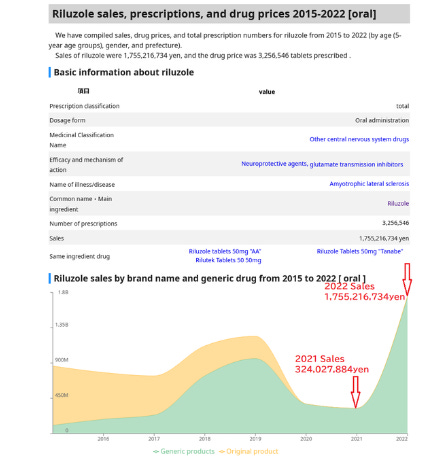
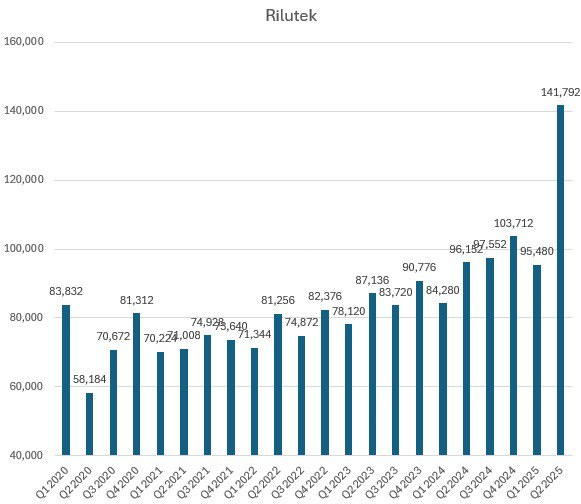
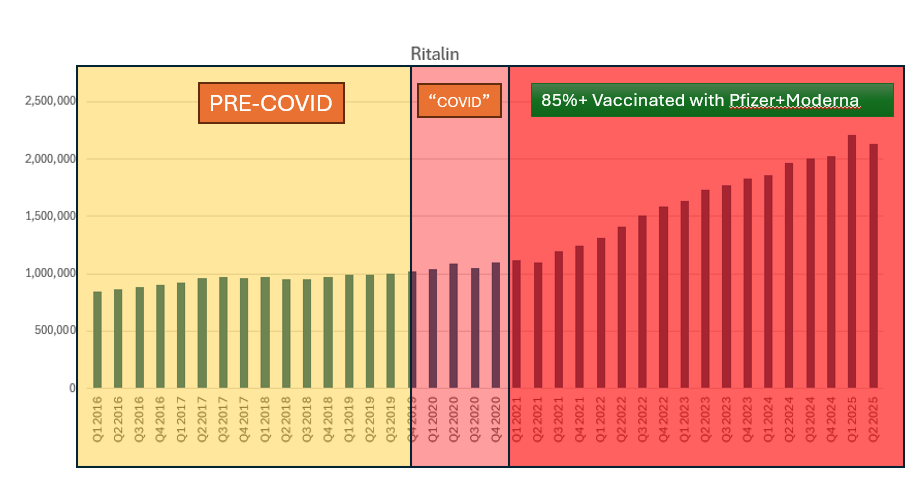
Excellent work and thank you for sharing such impressively convincing data related to the egregious harms the MRNA gene therapy has caused to the population at large because all vaccines/genetic delivery systems are leaky. I also appreciated the sociopolitical lesson on Singapore another illustration of digital anything is harmful to the living being. People need to wake up stop with the QR codes the Apple Watches the tap blah blah blah as they are being led the the digital and physical slaughterhouses. God bless you protect you and I for one am grateful to you for your scholarship and courage ( your snarky humor made the read more enjoyable as so much of the data coming out is so darn depressing)
"Enjoy the zombie apocalypse and stay away from highly vaccinated areas" - LOL
So stay away from work, school, concerts, movies, sports and everywhere with people. Given the 90+% "vaccine" uptake in most countries and ~85% globally maybe we should start our own country. Call it "Unvaxxedistan"